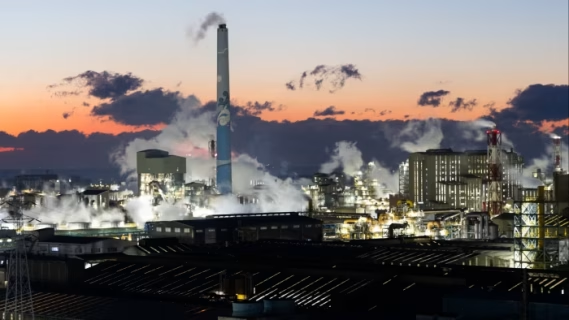The Stibnite Gold-Antimony Project is a project that is involved in the mining development undertaken in central Idaho. The $1.3 billion project was approved by the relevant authorities and Perpetua Resources has initiated the early-works construction on the project. The development was given the green light by the United States Forest Service after about nine years of authorization, and $139 million of financial guarantee has been given to enable construction works in the development to begin. Other than the Stibnite Gold-Antimony project in Idaho there is an ongoing deliberation on construction of a smelter project by Korea zinc.
Korea Zinc has noted its plans to $7.4 billion build a smelter project to produce key metals and minerals in the United States. The company noted that the U.S. government asked the company to build the facilities. The aim is to provide response to the expansion of global supply chain risks and increasing demands for non-ferrous metals in the country. Conversely, the smelter plans to produce non-ferrous metals such as zinc, lead and copper. It also aims to produce precious metals such as gold and silver. Strategic minerals that will be produced include antimony, germanium, and gallium
.

Supply-Chain Significance & Market Context
The Stibnite project’s dual commodity output, gold and antimony, positions it uniquely within North American mining. The gold stream supports project economics, while antimony provides strategic value as the only large-scale US supply candidate. By producing antimony domestically, the project addresses key critical-mineral supply risks, especially in the context of China’s dominant global share in antimony markets. Once operational, the mine could fulfill around 35 % of US antimony demand in its early years. The launch of early works demonstrates investor confidence despite broader headwinds in mining finance and ESG scrutiny.
Project Factsheet
Location: Stibnite–Yellow Pine district, central Idaho, USA
Developer: Perpetua Resources
Project cost: US $1.3 billion (current development phase)
Mineral production target: ~450,000 ounces of gold annually in initial years
Antimony reserves: ~148 million pounds proven & probable
Gold reserves: Over 6 million ounces
Strategic partner/financing: Potential US $2 billion debt facility via Export‑Import Bank of the United States “Make More in America” programme
Jobs: ~950 direct construction jobs, ~550 operational jobs projected
Environmental commitment: Project footprint reduced by ~13 % and wetlands/streams restoration integrated
Significance: First major new US antimony source outside China’s dominance
Start of early works: October 2025
Offtake market: US defence and critical industrial supply chains targeted

Environmental & Local Community Dynamics
Perpetua has sought to build in environmental and community commitments as integral to project design. The company reports reducing the project footprint by 13 %, improving stream and wetland conditions and incorporating legacy-site reclamation. Nonetheless, the project faces opposition from the Nez Perce Tribe, which has raised concerns about impacts to salmon populations and regional ecosystems. With construction scheduled to begin in rugged terrain, local logistics and environmental monitoring will be critical to on-time execution.
Outlook for Construction, Production and Strategic Outcomes
Early works now underway mark a shift from permitting to delivery phase for the Stibnite project. Commercial production is expected mid-decade, aligning with U.S. goals to fortify domestic supply of critical minerals. Monitoring will focus on financing closure, including the Export-Import Bank loan application, and construction schedule execution in mountain terrain. With gold production of around 450,000 ounces annually projected for initial years, and substantial antimony output anticipated, the project will be a bellwether for dual-commodity mining in the U.S. Similarly, international efforts to secure strategic resources are advancing, as seen in Tanzania’s $1.2 billion Namtumbo Uranium Mining Project, which positions the country among the world’s top ten uranium producers. Strategic implications include enhanced resilience in defence supply chains and reduced dependency on foreign mineral sources.

